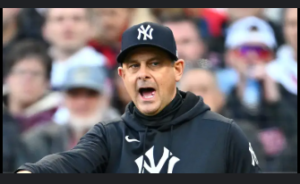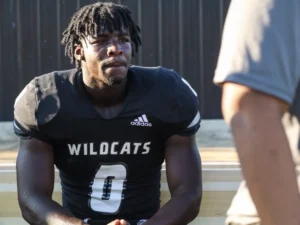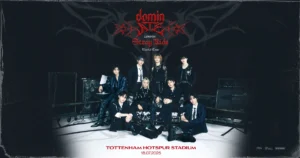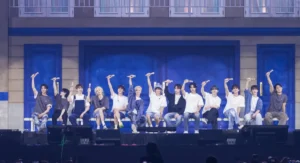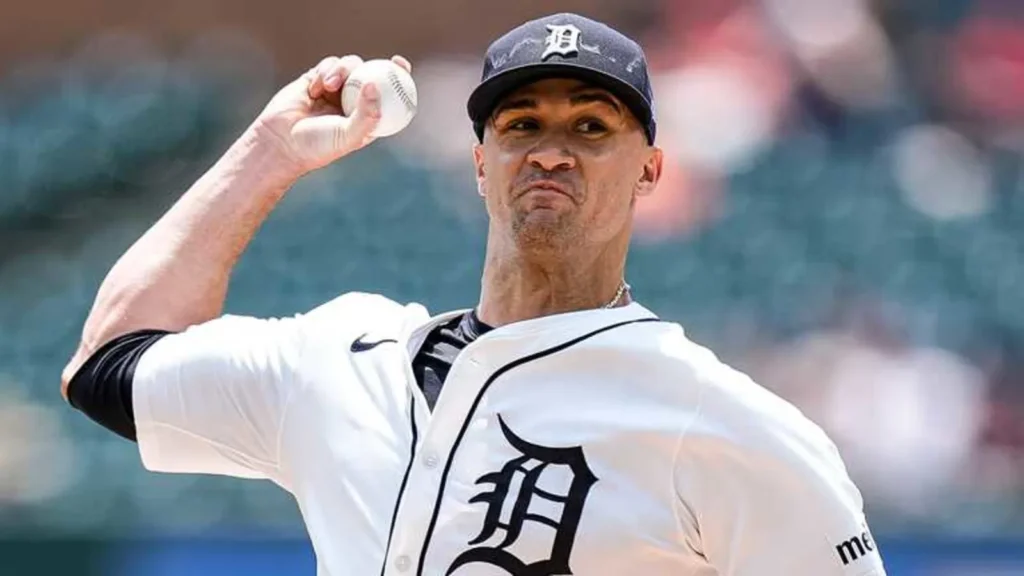
It was obvious the Yankees would have to pay a huge price to acquire Jack Flaherty after the Houston Astros dealt three of their best prospects for Yusei Kikuchi.
Up until the day of the trade deadline, when it became evident that the Yankees wouldn’t acquire Flaherty unless they could also include a new back in the mix.
The Yankees were either “unable to match up” with Detroit or were too afraid of floating medicals to sign the best rental available on the market. As a result of their decision to forgo adding a starting pitcher, the Dodgers will now be strengthened by Flaherty and his 2.95 ERA. To complete the trade, they only had to give up one top-10 prospect, Tharon Liranzo, who is their third-best catcher, and one top-30 player, Trey Sweeney.
According to Bryan Hoch, Sweeney, a former Yankee, appeared to impress the Tigers, who weren’t overawed by any of the players the Yankees really kept in their top minor league. Sadly for those hoping for a bright spot, the Tigers scouts’ assessment of the Yankees’ system only serves to strengthen the opinions of those who think a deal should have been made regardless of injury concerns.
Allegedly, Detroit was only impressed with the Yankees’ “lower-level” prospects. In an all-in year with Juan Soto, the Yankees arguably should have compromised on a few marginal lower-level players given the type of Dodgers prospects needed to close this deal.
Tigers scouts found the higher levels of the Yankees' system either untouchable (Dominguez, Jones) or unimpressive. A Jack Flaherty trade would have had to center on lower-level prospects.
— Bryan Hoch ⚾️ (@BryanHoch) July 31, 2024
Of course the Yankees ought to have traded Jack Flaherty for a lower-tier prospect.
Even if Flaherty encounters a few roadblocks, the price doesn’t appear to have been too high. What if it transpires that they made the incorrect “lower level” prospect protection decision? Well, anything. The 2024 Yankees would have had a better chance of adding to their trophy cabinet in the interim, but the 2027 Tigers may be able to brag about their accomplishments against the 2027 Yankees.
All that’s left to do is focus on Los Angeles and see how Flaherty holds up from a distance. It remains to be seen if the Yankees were “pushing hard to finalize” a trade involving Flaherty after adding Jazz Chisholm on Saturday. Until Andy Martino writes his next book, we won’t find out who brokered the agreement.
We do know, however, that sticking onto lower-level prospects in a championship-or-bust season is risk-averse general manager behavior, particularly as the price of said prospects declines and their quality declines out of need.
For two main reasons, the Yankees’ abandoned Jack Flaherty transaction is not the same as the Frankie Montas trade.

The Yankees either backed out of a nearly completed trade for Jack Flaherty due to health concerns, or they had trouble matching up with the Tigers in the first place, depending on how much you trust Brian Cashman or Ken Rosenthal.
Whatever the justification, Flaherty wound up in Los Angeles instead, for a meager Dodgers package, and Cashman took a beating for possibly having a problem with Flaherty’s back—after receiving a beating for not being more concerned about Frankie Montas’ sore shoulder earlier.
Cashman shown commendable control if, as he refused to acknowledge on Wednesday, he is genuinely concerned about Flaherty.
However, there are two main distinctions between grudgingly accepting Montas’s price and objecting to Flaherty. Just one? In 2022, Juan Soto was not a rental. Taking risks is more important now than it was in the past.
More significantly, the Montas return came at a high cost: after 1.5 years of injury problems, infielder Cooper Bowman, left-hander JP Sears, flamethrower Luis Medina, and top-100 prospect Ken Waldichuk were acquired, along with Lou Trivino. Greater control at a higher cost. Regarding Flaherty? Cashman objected to receiving far less for just two months of a top starter.
Sources: Yankees backed out of trade for Jack Flaherty because of medical concerns. Story: https://t.co/Eq8dBVhXXN
— Ken Rosenthal (@Ken_Rosenthal) July 31, 2024
According to reports, the Yankees pulled out of the trade for Jack Flaherty due to health concerns. We killed them for not doing so in 2022.
Rosenthal claims that the Yankees “backed out”; if this is accurate, they must have had an opportunity to pounce when the price dropped. After all, the Dodgers gave up a lackluster trade package in exchange for Flaherty. It was comparable to what a team would shell out for a premier pitcher who had injury issues. If the Yankees were going to pull off the Jack Flaherty Trade 2: Injured Version, they ought to have brought up the subject again once things had settled down.
Conversely, the Yankees paid an enormous price for a compromised Montas, and adding Trivino—who is now recovering from an injury—does not change that fact.
We know what the Dodgers did “match up” with, and it was very disappointing, so if Cashman’s replies are more true and the Yankees simply “never matched up,” the scenario becomes even more puzzling. It appears from reading the tea leaves (Cashman’s reluctance to explicitly address a query on Flaherty’s health) that Detroit favored the Dodgers’ lowball while the Yankees undervalued the Tigers out of fear of an injury.
In any case, when Cashman cashed in the farm for Montas, he showed the care we wanted him to show. Interestingly, though, this specific arrangement would not have required a large sum of money, and it most likely wouldn’t have hurt all that much. Though given where things ended up, Cashman deserves credit for taking medical issues seriously. Still, it was definitely worth choosing this route.

